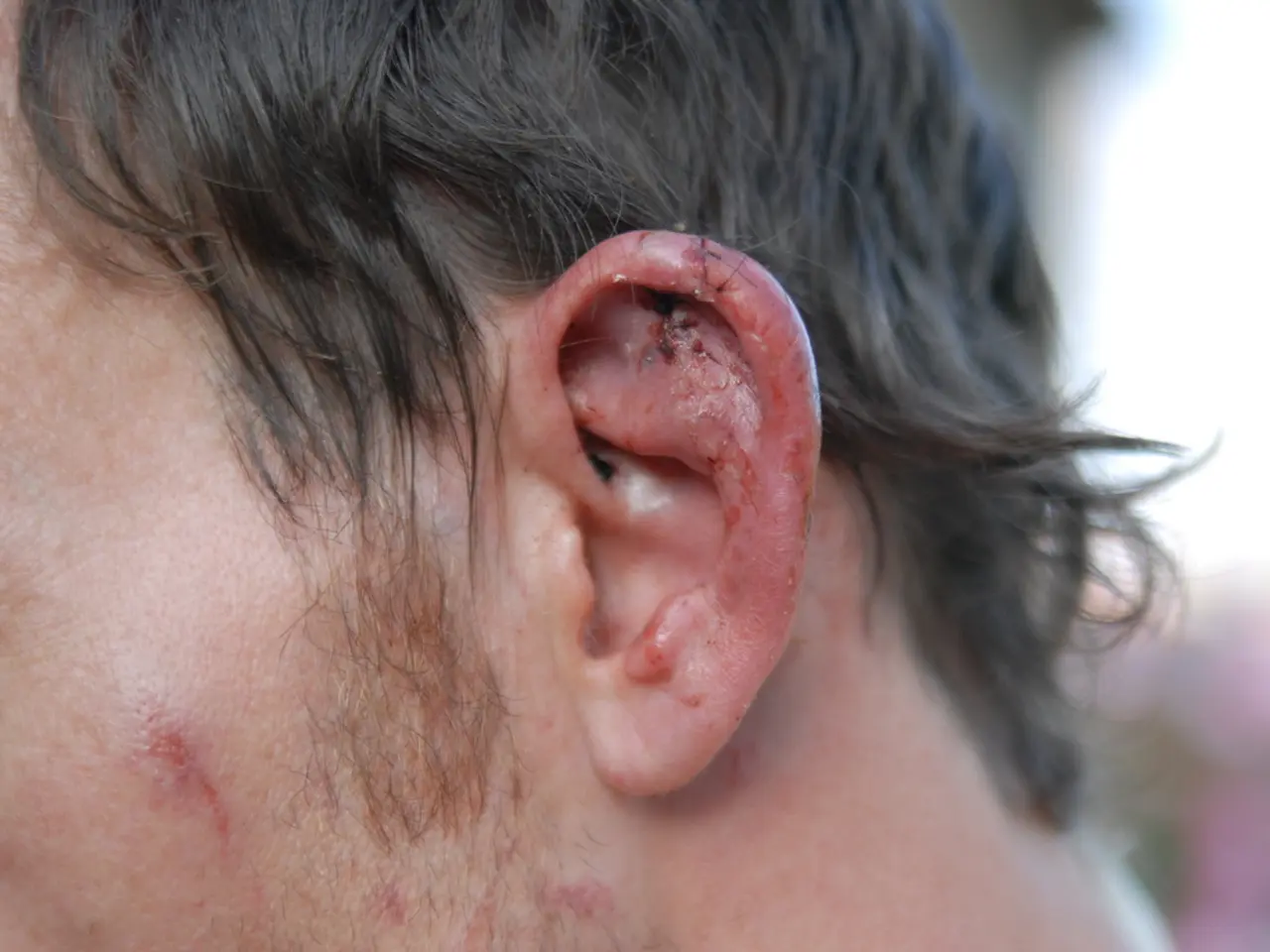Investigation of Forensic Nature Provides Investigators with New Insights from Blood Spots
In a groundbreaking study, researchers have delved into the dynamics of bloodstains on cotton fabrics, providing valuable insights for forensic investigations. The research, supported by the National Institute of Justice, was published in the journal Forensic Science International on June 26.
The study, titled "Dynamics of blood falling on three types of cotton fabrics and resulting bloodstains," was co-authored by Fujun Wang, Vanessa Gallardo, Tiegang Fang, and Stephen Michielsen. Fujun Wang, a former Ph.D. student at NC State, is the first author of the paper.
The researchers investigated the time evolution of blood drops falling on plain woven, 3×1 twill, and jersey knit cotton fabric. They splashed these fabrics with porcine blood at 12 different velocities, captured the impact using high-speed cameras, and analyzed the images to identify patterns.
The results showed that the velocity of blood significantly affects the pattern and characteristics of bloodstains on cotton fabrics. Higher velocity blood impacts lead to more extensive bloodstain patterns with numerous smaller satellite stains surrounding a central stain. Conversely, blood moving at lower velocities tends to create larger, more isolated drops with fewer satellites.
The physical properties of blood as a shear-thinning non-Newtonian fluid also influence stain formation. Under high shear rates (like high velocity impacts), blood’s viscosity decreases, allowing it to break up differently when hitting fabric compared to low velocity impacts.
Characteristics of cotton fabric also play a role, as some cotton types absorb and disperse blood differently, resulting in variations in stain shape and clarity. Plain-woven cotton, for instance, is easier to estimate the velocity of blood spatter compared to other fabrics, while twill is the most difficult.
Blood on fabric wicks across the surface of the fibers, spreading out. This wicking process was found to occur in three time domains: when the blood drop travels across the fabric surface, when the blood enters the inter-yarn spaces in the fabric structure, and when the blood moves from the inter-yarn spaces into the inter-fiber spaces and wicks along the fiber surfaces.
Empirical power-law-based models were developed to predict wicking kinematics, the splashing threshold, and the number of satellite droplets during splashing. These models could potentially aid in the interpretation of bloodstain patterns in forensic investigations.
The researchers are interested in doing additional work with a wider variety of fabrics, weaves, and yarns to further expand our understanding of bloodstain dynamics on different materials. This research could potentially lead to improved forensic techniques for investigating crime scenes.
[1] Fujun Wang, Vanessa Gallardo, Tiegang Fang, Stephen Michielsen. Dynamics of blood falling on three types of cotton fabrics and resulting bloodstains. Forensic Science International, June 26, 2023. [5] Data not directly provided in the study but inferred from the findings.
- The study on bloodstains on cotton fabrics, published in Forensic Science International, was supported by the National Institute of Justice and co-authored by Fujun Wang, Vanessa Gallardo, Tiegang Fang, and Stephen Michielsen.
- The researchers investigated the impact of blood velocity on bloodstain patterns and characteristics on three types of cotton fabrics: plain woven, 3×1 twill, and jersey knit.
- The study found that higher velocity blood impacts result in more extensive bloodstain patterns with numerous smaller satellite stains, while lower velocity blood tends to create larger, more isolated drops with fewer satellites.
- The wicking process of blood on fabric fibers was found to occur in three time domains and the researchers developed empirical power-law-based models to predict wicking kinematics, the splashing threshold, and the number of satellite droplets during splashing, which could aid in the interpretation of bloodstain patterns in forensic investigations. The researchers plan to extend their research to a wider variety of fabrics, weaves, and yarns to further understand bloodstain dynamics on different materials.




